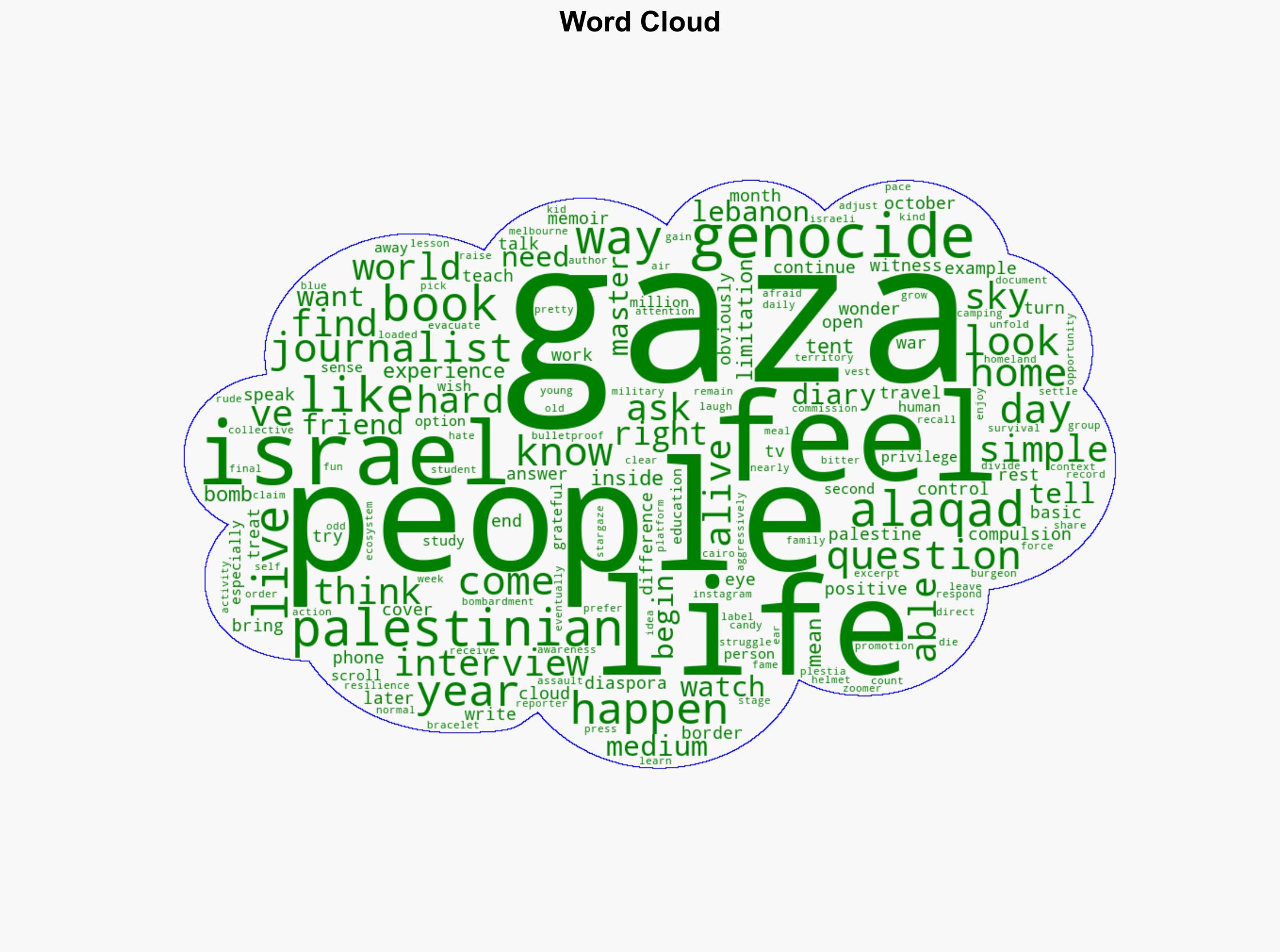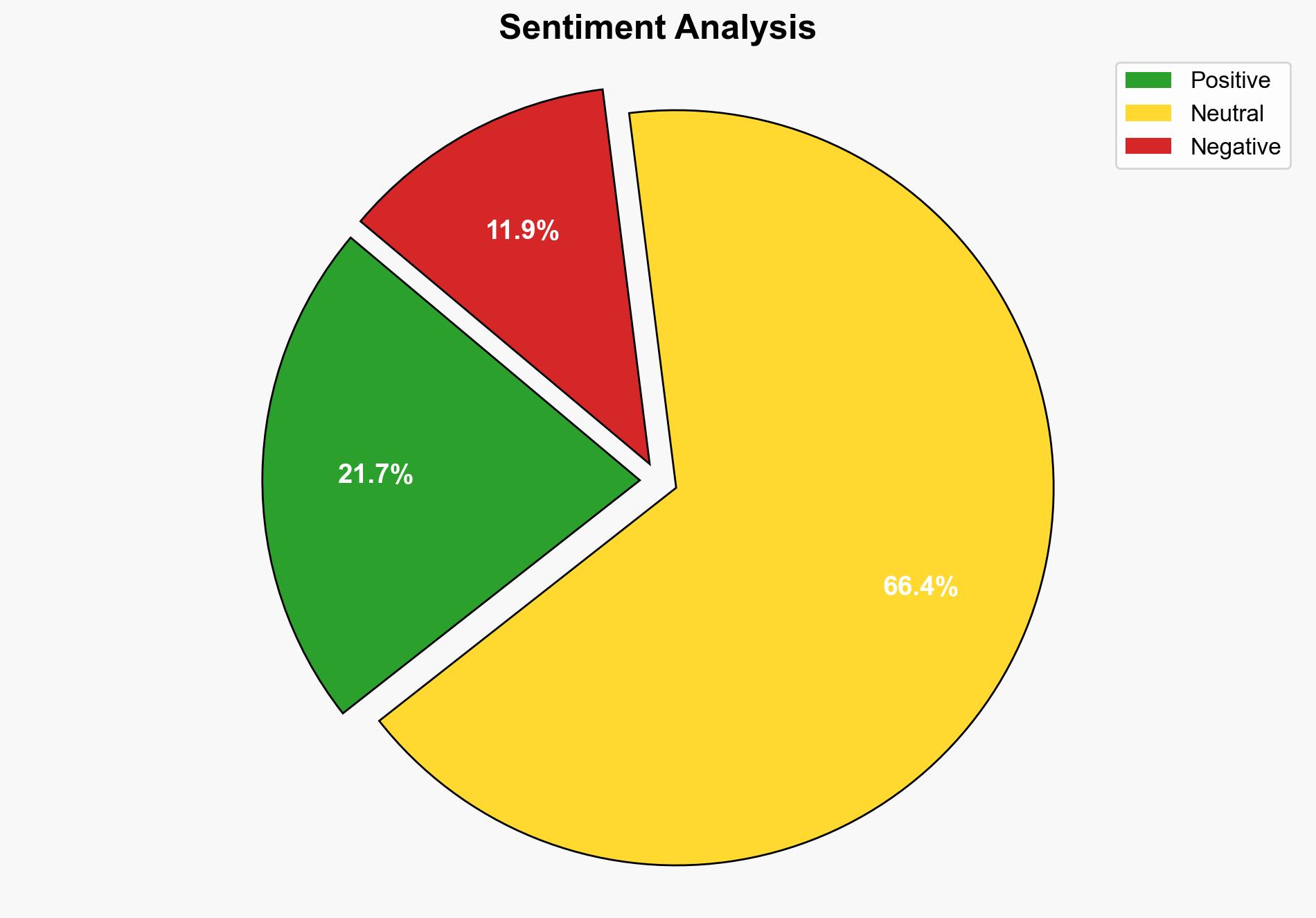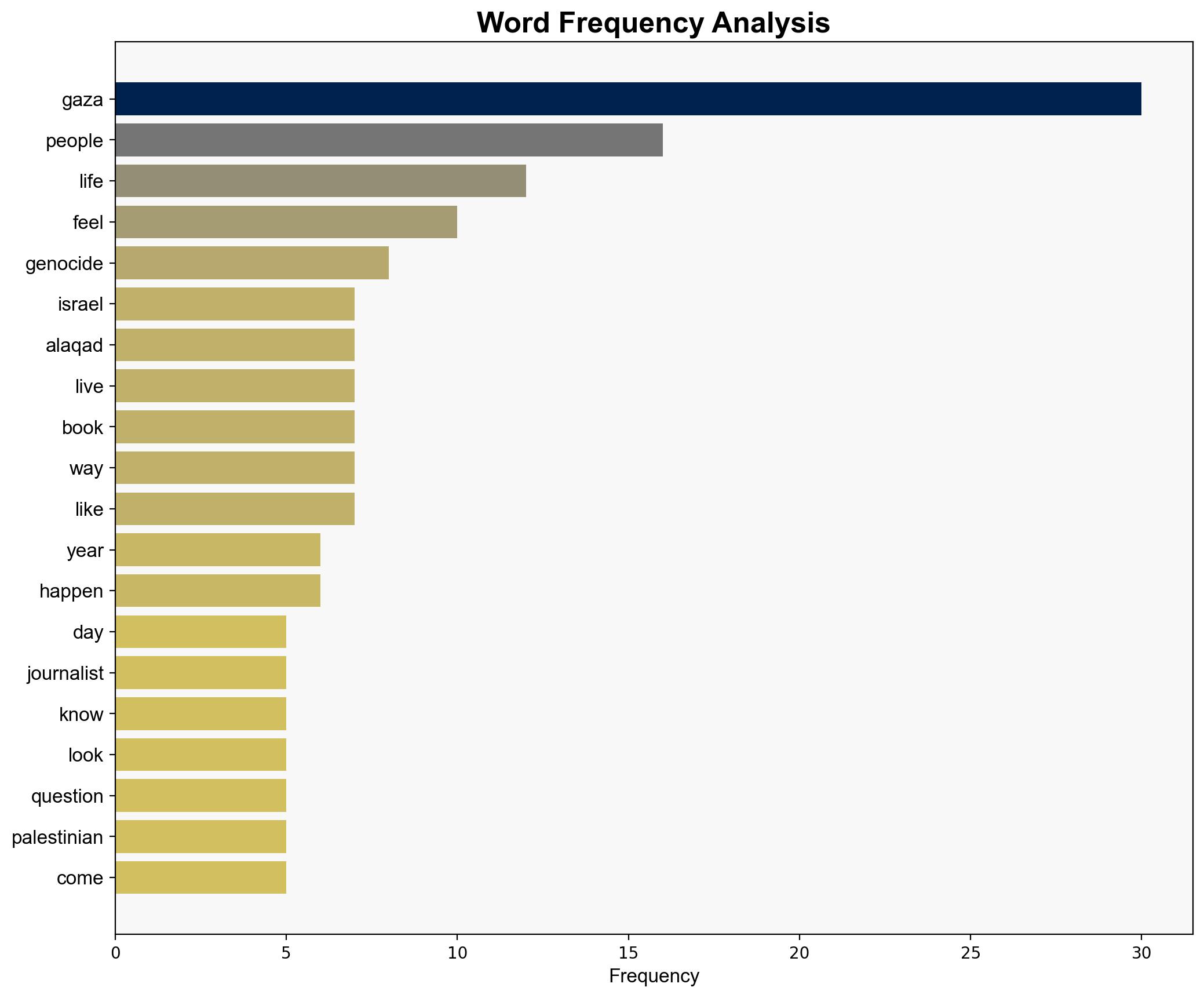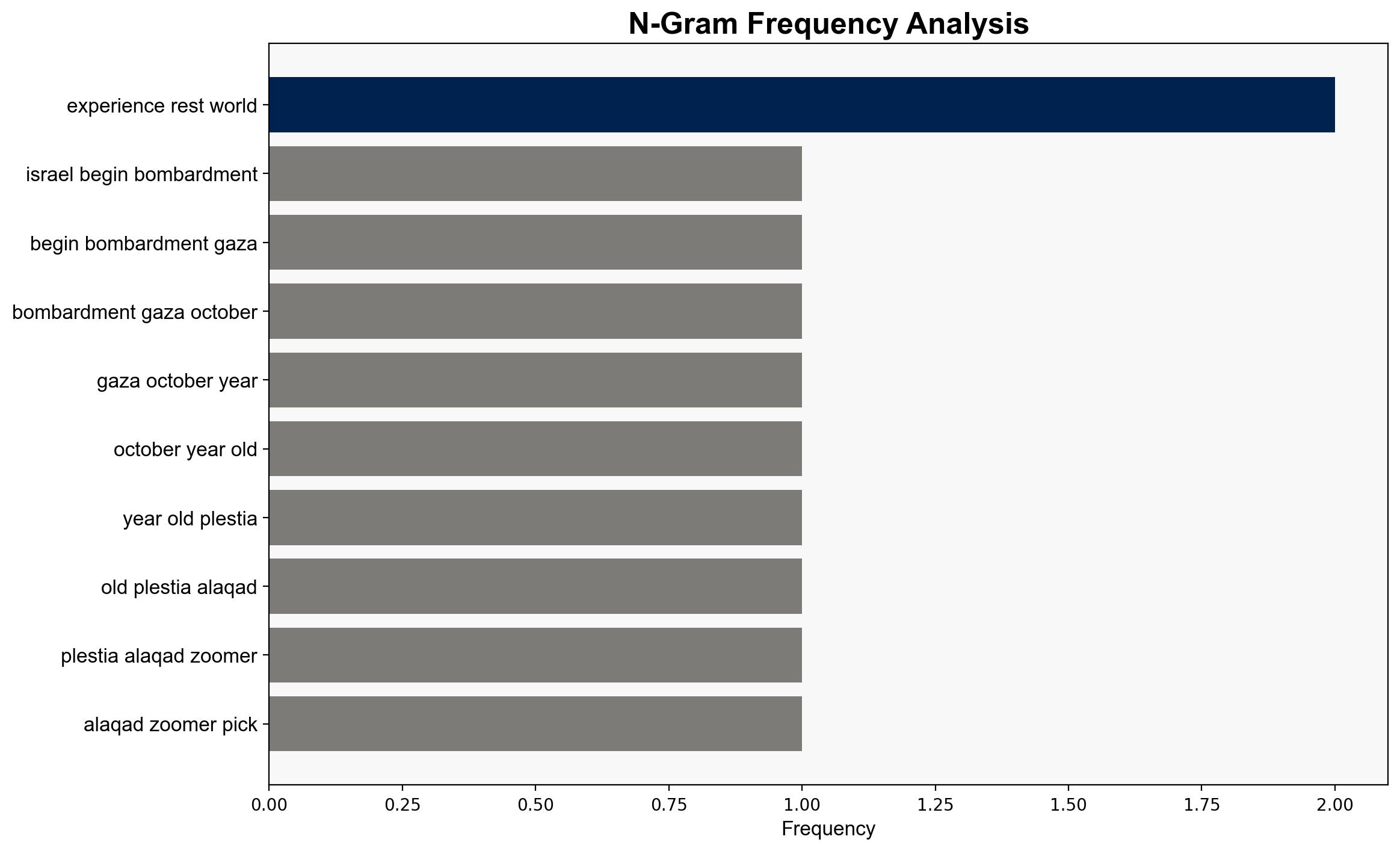A Diary of Survival – The Cut
Published on: 2025-09-30
Intelligence Report: A Diary of Survival – The Cut
1. BLUF (Bottom Line Up Front)
The analysis of the source material suggests two primary hypotheses regarding the narrative of survival and reporting under conflict in Gaza. The most supported hypothesis is that the narrative serves as a powerful tool for raising awareness and influencing international perception of the conflict. Confidence in this hypothesis is moderate due to the subjective nature of personal narratives and potential biases. Recommended action includes leveraging such narratives to foster dialogue and understanding in international forums while being mindful of the subjective elements involved.
2. Competing Hypotheses
Hypothesis 1: The narrative is primarily a personal account aimed at documenting the lived experience of conflict, serving as a historical record and personal catharsis.
Hypothesis 2: The narrative is strategically crafted to influence international perception and policy regarding the Israeli-Palestinian conflict, using personal storytelling as a means to evoke empathy and drive political action.
Using ACH 2.0, Hypothesis 2 is better supported due to the emphasis on raising awareness and the use of social media platforms to reach a global audience, suggesting an intent beyond personal documentation.
3. Key Assumptions and Red Flags
– Assumptions include the belief that personal narratives can significantly influence international policy and public opinion.
– Potential cognitive biases include confirmation bias, as the narrative may selectively highlight events that support a particular viewpoint.
– Red flags include the lack of corroborating evidence from independent sources and the potential for emotional manipulation through selective storytelling.
4. Implications and Strategic Risks
The narrative could contribute to increased international pressure on Israel, potentially leading to diplomatic tensions. It may also inspire similar narratives from other conflict zones, amplifying global awareness but also risking narrative fatigue. The psychological impact on audiences could lead to polarized views, complicating conflict resolution efforts.
5. Recommendations and Outlook
- Encourage balanced reporting and the inclusion of multiple perspectives to provide a comprehensive understanding of the conflict.
- Engage with international organizations to facilitate dialogue based on these narratives, aiming for constructive outcomes.
- Scenario-based projections:
- Best Case: Increased awareness leads to renewed peace talks and conflict resolution efforts.
- Worst Case: Heightened tensions and further polarization exacerbate the conflict.
- Most Likely: Continued use of personal narratives in media with incremental shifts in public perception.
6. Key Individuals and Entities
– Plestia Alaqad
7. Thematic Tags
national security threats, regional focus, media influence, conflict reporting





